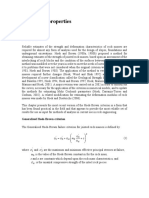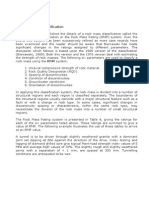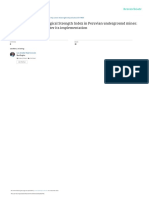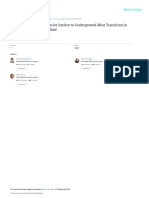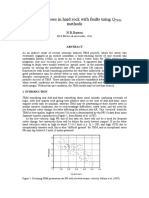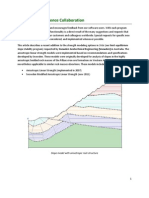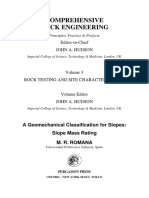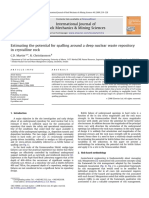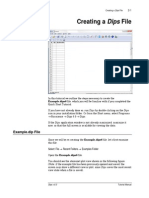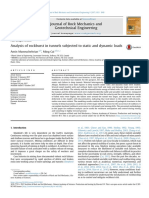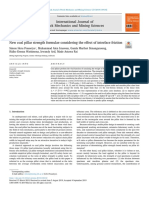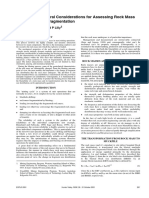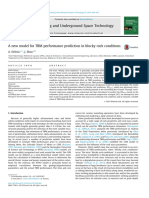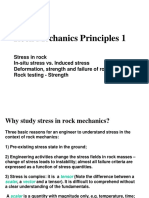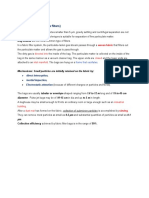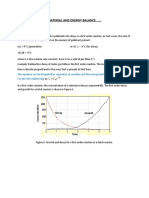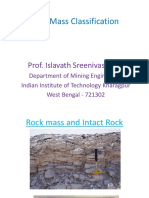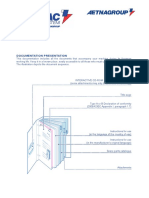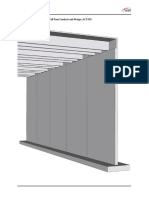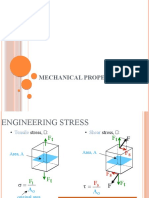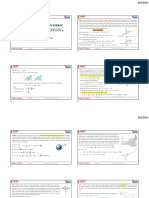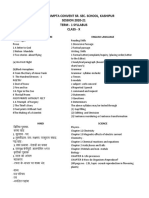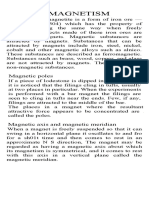100% found this document useful (1 vote)
93 views31 pagesRock Mass Classification: Prof. Islavath Sreenivasa Rao
This document discusses rock mass classification systems including intact rock properties, rock mass properties, and classification methods such as the Rock Structure Rating, Coal Mine Roof Rating, and thickness weighted average roof rating. It provides tables of intact rock and rock mass properties, explains different classification parameters and how they are rated, and gives an example of an underground data sheet for coal mine roof rating calculations. Rating values are used to determine rock mass quality and design appropriate ground support systems.
Uploaded by
PraphulJainCopyright
© © All Rights Reserved
We take content rights seriously. If you suspect this is your content, claim it here.
Available Formats
Download as PDF, TXT or read online on Scribd
100% found this document useful (1 vote)
93 views31 pagesRock Mass Classification: Prof. Islavath Sreenivasa Rao
This document discusses rock mass classification systems including intact rock properties, rock mass properties, and classification methods such as the Rock Structure Rating, Coal Mine Roof Rating, and thickness weighted average roof rating. It provides tables of intact rock and rock mass properties, explains different classification parameters and how they are rated, and gives an example of an underground data sheet for coal mine roof rating calculations. Rating values are used to determine rock mass quality and design appropriate ground support systems.
Uploaded by
PraphulJainCopyright
© © All Rights Reserved
We take content rights seriously. If you suspect this is your content, claim it here.
Available Formats
Download as PDF, TXT or read online on Scribd
/ 31







